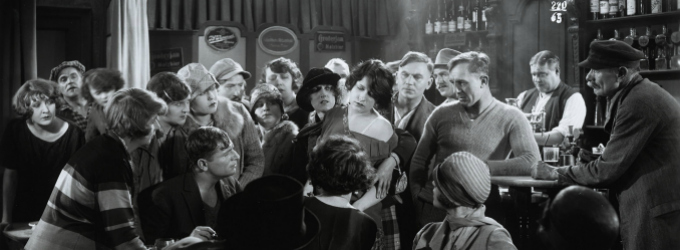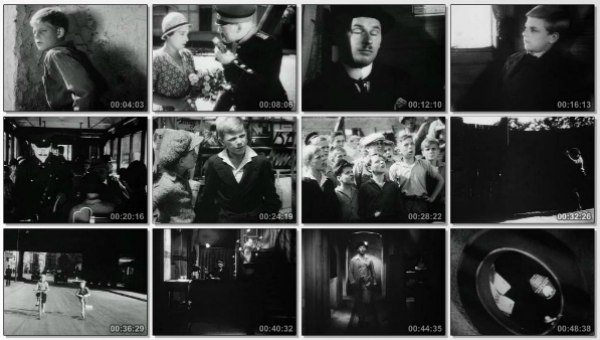 Never heard of Gerhard Lamprecht? Well, you’re in good company. Until recently, this polymath of the German film world seemed to have dropped off the radar. In the past couple of years, however, his newly-restored films have caused a celluloid stir – from a retrospective at the Pordenone Silent Film Festival in 2013 to a short season of his early work at this year’s Cambridge Film Festival, audiences are paying this director some much deserved attention. These beautiful, emotional and sometimes funny films are well worth seeking out, especially if you can get along to the show with Neil Brand at the piano.
Never heard of Gerhard Lamprecht? Well, you’re in good company. Until recently, this polymath of the German film world seemed to have dropped off the radar. In the past couple of years, however, his newly-restored films have caused a celluloid stir – from a retrospective at the Pordenone Silent Film Festival in 2013 to a short season of his early work at this year’s Cambridge Film Festival, audiences are paying this director some much deserved attention. These beautiful, emotional and sometimes funny films are well worth seeking out, especially if you can get along to the show with Neil Brand at the piano.
So who was this man whose documentary style of film making explored Expressionist techniques and influenced the neo-realist movement? Maybe Hitchcock saw the early films during his time in Germany and perhaps even borrowed some of Lamprecht’s innovative editing ideas. Lamprecht was passionate about highlighting the contrast between the glittering wealth and bright lights of Weimar Berlin with the hard, and usually short, lives of the dispossessed. In this society there were few second chances if your luck ran out.
Born in 1897 and raised in Berlin, Gerhard Lamprecht’s took a part-time job as a film projectionist at the age of 12. Within a couple of years he had his own collection of film prints, and he soon added actor, screenwriter and director to his CV. He sold his first script in 1914 and even wrote scripts while he was a patient in a military hospital during the Great War. By 1919, he was head of scriptwriting at Lupu Pick’s company Rex Films. The next year he directed his first feature and struck box office gold in 1923 with the series CONFESSIONS OF A WOMAN. He liked to work with the same team of technicians and actors where possible, always examining the vulnerable underbelly of decadence.
To an English-speaking audience, Lamprecht’s silent films have the feel of Thomas Hardy about them…
Lamprecht’s version of Thomas Mann’s BUDDENBROOKS (1923) started a trend for exposing the misery suffered by the working classes, followed by IN THE SLUMS OF BERLIN (1925), PEOPLE TO EACH OTHER (1926) and CHILDREN OF NO IMPORTANCE (1926); this film was based on reports by the Society for Prevention of Exploitation of Children. The film market soon flooded with such fare so Lamprecht turned his attention to historical drama (BETRAYAL, 1927) and military drama (the two-part OLD FRITZ, 1928). Internationally he was best known for his adaptation of the children’s literary classic EMIL AND THE DETECTIVES (1931), scripted by Billy (then Billie) Wilder.
Lamprecht remained in Germany throughout the Second World War without, apparently, becoming involved in producing Nazi propaganda. Instead he concentrated on steady, even run of the mill, crime and melodrama films, along with several literary adaptations, MADAME BOVARY (1937) and THE GAMBLER (1938). His working class melodramas were hugely popular during World War II and he made a ‘rubble film’, SOMEWHERE IN BERLIN, immediately after the war. He retired in the late 1950s. Lamprecht’s collection of film prints became the foundation of the Deutsche Kinemathek in 1963 and his 10-volume catalogue of German silent film became a standard reference book. Deutsche Kinemathek has restored some Lamprecht titles and it seems that some will be available on DVD soon.
To an English-speaking audience, Lamprecht’s silent films have the feel of Thomas Hardy about them: they share an interest in social insecurity, especially the often catastrophic effect of small life events on people who have few resources and how humanity and cruelty live side by side in difficult times. Just take a few minutes to consider the context of their making – it was a few short years after the Treaty of Versailles and Germany was in the midst of the Great Depression, with hyper-inflation and the nascent National Socialist Party beginning to gain popularity. It was a critical time to be a film-maker able to tell such stories in Berlin.
These beautiful and touching films are filled with Lamprecht’s passion for highlighting social inequality, especially for the working class. Perhaps because the situations in the films were so dire, especially for children, you should be ready for tears. Some of the endings are a bit twee and predictable but the journey for the viewer is intense (and beautiful to watch) so you’ll find that you want to save that child, to rescue that wife from her vile husband, to slip a few pounds to that unemployed man. Lamprecht’s films embody the best of silent cinema from this late silent period. As a viewer you have to invest emotion, interest and imagination; however, the payback is enormous. There are few cinematic experiences as rewarding as watching a top quality silent film accompanied by great music.
So go on, open your eyes and your heart to the glorious silent films of Gerhard Lamprecht. You won’t regret it.
Click here for further information on the Lamprecht strand at the Cambridge Film Festival. You can also read a review of UNDER THE LANTERN here.


2 thoughts on “Introducing Gerhard Lamprecht”
Comments are closed.